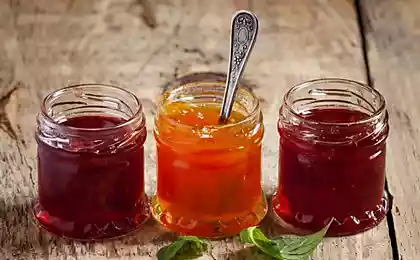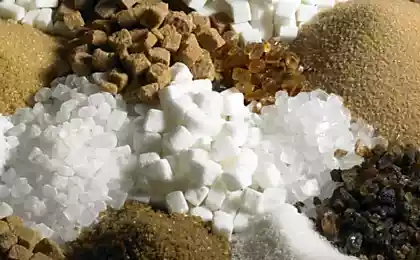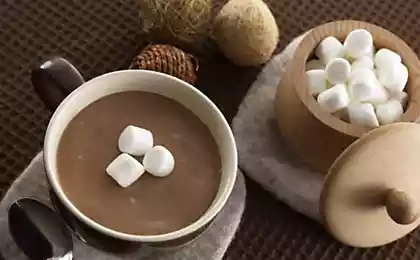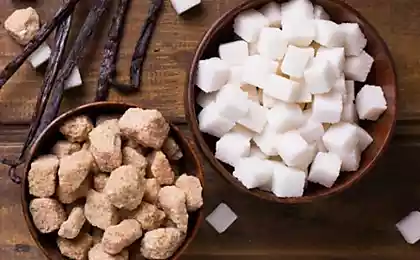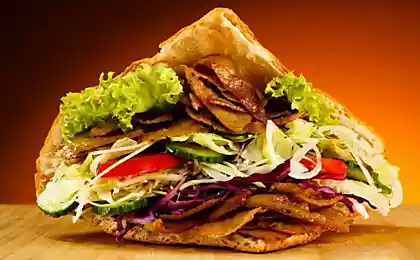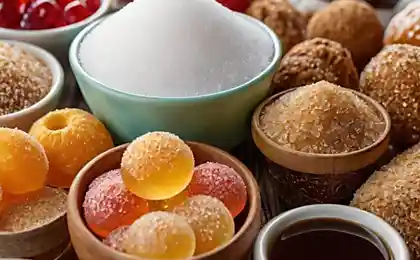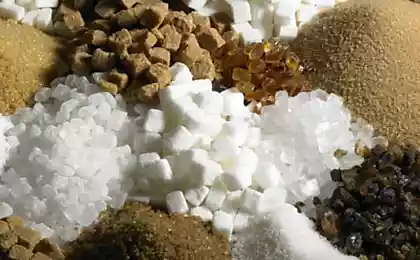159
5 unique strengths of sugar
Using sugar exclusively to give the products a sweet taste in the cooking process, we rarely think about the fact that its value and qualities are much more multifaceted, even within the framework of cooking.
On the strengths of sugar:
1. Sweet taste.
Sweet is one of the four main tastes, in addition to salty, bitter and sour, which a person encounters in nutrition (now the four main tastes, which were described in the nineteenth century by the German physiologist Adolf Fick, officially added the fifth - the taste of umami (from the Japanese word "umai" - delicious, pleasant). This taste is typical for protein products: meat, fish and broths based on them. Sweet taste is detected by special receptors of the tip of the tongue, called the kidneys.
Interestingly, the perception of sweetness in different people has significant differences that depend on genetics, age, gender, our regular menu, as well as feelings of satiety or hunger. Let the sweet taste and called the taste of childhood, passion for it feels the vast majority of adults. The property of the body to give preference to sweet is due to the fact that sweet substances of natural origin are high in calories (in particular, glucose is the main metabolic fuel for the brain). Therefore, the ability to recognize the sources of this energy in the form of glucose, fructose or sucrose is important for survival.
To compare the levels of sweetness of substances, an indicator of the degree of sweetness (ratio to pure sucrose) was introduced. It is noteworthy that there are sugars that exceed the sweetness threshold of sucrose hundreds of times! These are sucralose (grade 500), glucoside (300) and aspartame (160-200).
2. Texture
Texture and special shape is the second most important quality of sugar. This property is of particular importance for confectionery, since in many recipes - sugar, sometimes the only ingredient that can give volume. This quality of the substance is endowed due to the uniformity and size of the crystals.
At the same time, sugar is also used to impart viscosity in various pastes, creams, etc. Certain varieties of glucose syrups (with a low dextrose equivalent) even allow mousses to stabilize.
3. Staining
Heating sugar leads to special physicochemical processes, as a result of which the substance changes its color from yellow to dark brown. These transformations are caused by one of two reactions:
1) The Maillard reaction is a chemical reaction between an amino acid and sugar when heated, during which the product acquires a characteristic golden or brown color.
2) Caramelization is the oxidation of sugar under the influence of temperature. Unlike the Maillard reaction, caramelization occurs when heated relatively dry foods (e.g., grilled).
Trimoline (inverted sugar), due to its components, has the same coloring properties as sugar. As for glucose syrups, their ability to stain during heating is proportionally dependent on the dextrose equivalent.
4. The term “hygroscopicity” is used to denote the ability of a substance to reduce the water level as much as possible in its content, stabilizing it and thus limiting the increase in the number of bacteria and increasing the shelf life of the product. That is why sucrose has received its integral role in the processes of conservation (jam and confiture).
5. Fermentation
Do not forget that in addition to the previously mentioned possibilities, sugar is also necessary for the implementation of fermentation processes with the participation of yeast: we also owe it the air consistency of various buns and brioches.
Source
Source: /users/413
On the strengths of sugar:
1. Sweet taste.
Sweet is one of the four main tastes, in addition to salty, bitter and sour, which a person encounters in nutrition (now the four main tastes, which were described in the nineteenth century by the German physiologist Adolf Fick, officially added the fifth - the taste of umami (from the Japanese word "umai" - delicious, pleasant). This taste is typical for protein products: meat, fish and broths based on them. Sweet taste is detected by special receptors of the tip of the tongue, called the kidneys.
Interestingly, the perception of sweetness in different people has significant differences that depend on genetics, age, gender, our regular menu, as well as feelings of satiety or hunger. Let the sweet taste and called the taste of childhood, passion for it feels the vast majority of adults. The property of the body to give preference to sweet is due to the fact that sweet substances of natural origin are high in calories (in particular, glucose is the main metabolic fuel for the brain). Therefore, the ability to recognize the sources of this energy in the form of glucose, fructose or sucrose is important for survival.
To compare the levels of sweetness of substances, an indicator of the degree of sweetness (ratio to pure sucrose) was introduced. It is noteworthy that there are sugars that exceed the sweetness threshold of sucrose hundreds of times! These are sucralose (grade 500), glucoside (300) and aspartame (160-200).
2. Texture
Texture and special shape is the second most important quality of sugar. This property is of particular importance for confectionery, since in many recipes - sugar, sometimes the only ingredient that can give volume. This quality of the substance is endowed due to the uniformity and size of the crystals.
At the same time, sugar is also used to impart viscosity in various pastes, creams, etc. Certain varieties of glucose syrups (with a low dextrose equivalent) even allow mousses to stabilize.
3. Staining
Heating sugar leads to special physicochemical processes, as a result of which the substance changes its color from yellow to dark brown. These transformations are caused by one of two reactions:
1) The Maillard reaction is a chemical reaction between an amino acid and sugar when heated, during which the product acquires a characteristic golden or brown color.
2) Caramelization is the oxidation of sugar under the influence of temperature. Unlike the Maillard reaction, caramelization occurs when heated relatively dry foods (e.g., grilled).
Trimoline (inverted sugar), due to its components, has the same coloring properties as sugar. As for glucose syrups, their ability to stain during heating is proportionally dependent on the dextrose equivalent.
4. The term “hygroscopicity” is used to denote the ability of a substance to reduce the water level as much as possible in its content, stabilizing it and thus limiting the increase in the number of bacteria and increasing the shelf life of the product. That is why sucrose has received its integral role in the processes of conservation (jam and confiture).
5. Fermentation
Do not forget that in addition to the previously mentioned possibilities, sugar is also necessary for the implementation of fermentation processes with the participation of yeast: we also owe it the air consistency of various buns and brioches.
Source
Source: /users/413
The first vending machine powered by solar batteries
A Spanish mattress can save you from sudden infant deaths




